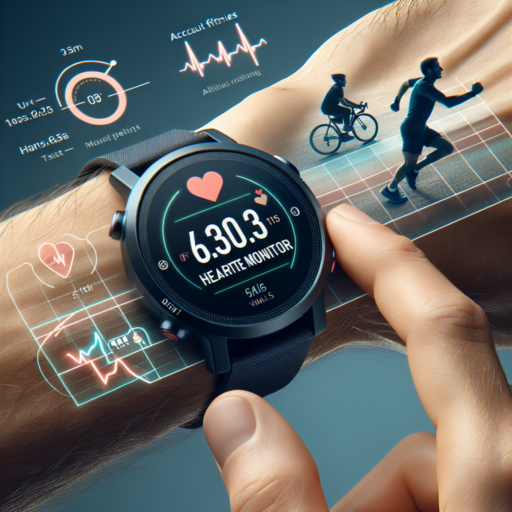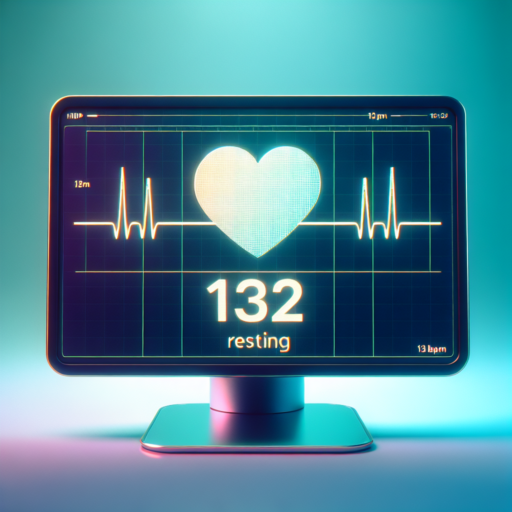No se han encontrado productos.
Understanding Garmin Instinct 2 Heart Rate Accuracy
The accuracy of the heart rate sensor in the Garmin Instinct 2 is a crucial factor for athletes and fitness enthusiasts who rely on this data for optimizing their training and health monitoring. Garmin has integrated advanced technology into the Instinct 2 to ensure that the heart rate readings are as accurate as possible. Understanding how this technology works and its limitations is key to getting the most out of your device.
Garmin Instinct 2 utilizes a technology called Garmin Elevate for heart rate monitoring. This wrist-based heart rate technology employs optical sensors that gauge the blood flow through your wrist, providing real-time heart rate data without the need for a chest strap. To enhance accuracy, the device must be worn correctly; it should be snug against the wrist but not too tight, and positioned slightly above the wrist bone. Factors such as skin temperature, physical characteristics, and the type and intensity of your activity can affect the precision of the readings.
Moreover, Garmin Instinct 2’s heart rate accuracy is maximized during specific types of activities. While excellent for monitoring heart rate during activities like running or cycling, it might not provide the same level of precision for activities involving irregular movements or wrist-based activities such as tennis. For activities that make it difficult to maintain consistent wrist-based readings, pairing the Garmin Instinct 2 with a compatible chest strap heart rate monitor can offer more accurate data.
How Does Garmin Instinct 2 Measure Heart Rate?
The Garmin Instinct 2 smartwatch incorporates cutting-edge biosensing technology to provide users with continuous, real-time heart rate monitoring. Central to this capability is the incorporation of Garmin’s proprietary Elevate™ technology, a wrist-based heart rate monitoring system. This innovative system utilizes optical sensors strategically placed at the back of the watch, which emit green light absorbed by the skin. As the light reflects back from the blood vessels, the sensors analyze the light’s modulation, allowing the watch to calculate the user’s heart rate with impressive accuracy.
Moreover, the Garmin Instinct 2 enhances the standard heart rate tracking functionality through its advanced algorithms. These algorithms are designed to interpret data received from the optical sensors, factoring in the level of activity and the user’s unique physiological characteristics. By doing so, the device not only provides a snapshot of the user’s current heart rate but also offers insights into heart rate variability, resting heart rate, and even stress levels based on the heart rate data. This multidimensional analysis allows users to get a comprehensive understanding of their cardiovascular health and overall fitness levels.
An additional significant feature of the Garmin Instinct 2’s heart rate monitoring capability is its 24/7 operation. Unlike traditional heart rate monitors that might require manual activation or only function during physical activity, the Garmin Instinct 2 continuously tracks the user’s heart rate throughout the day and night. This constant monitoring ensures that users have a complete record of their heart rate trends over time, facilitating better understanding and management of their health and fitness goals.
Comparing Garmin Instinct 2 Heart Rate Accuracy to Other Fitness Trackers
When it comes to tracking physical activity and health metrics, heart rate measurement is a crucial feature offered by many fitness trackers. The Garmin Instinct 2 distinguishes itself with its advanced heart rate monitoring capabilities. This discussion aims to compare this device’s heart rate accuracy with that of other popular fitness trackers on the market.
Firstly, the Garmin Instinct 2 employs Elevate™ heart rate technology which uses a combination of optical sensors to continuously measure heart rate at the wrist. This method is convenient and non-intrusive, allowing for 24/7 monitoring without the need for a chest strap. When compared to other fitness trackers, this technology not only enhances the accuracy of heart rate readings but also ensures minimal lag time in data processing, providing users with real-time feedback on their physical state.
In contrast, some other fitness trackers might rely on less sophisticated heart rate sensors or algorithms, potentially resulting in discrepancies in heart rate data. It’s important for users to consider the type of activities they are engaged in and how these might affect the accuracy of heart rate measurements. For instance, activities involving irregular movements or higher levels of physical contact might pose challenges to accurate heart rate monitoring on devices with lesser sensor sensitivity or algorithm sophistication than the Garmin Instinct 2.
Key Features Enhancing the Accuracy of Garmin Instinct 2
- Wrist-based Heart Rate: Use of Elevate™ technology for accurate, 24/7 heart rate monitoring.
- Advanced Sensor Technology: High-sensitivity monitoring adapts to different types of physical activity.
- Real-time Data: Instantaneous heart rate feedback suitable for both high-intensity workouts and day-to-day activities.
Improving Accuracy: Tips for Getting the Best Heart Rate Readings with Your Garmin Instinct 2
Getting accurate heart rate readings from your Garmin Instinct 2 is crucial for monitoring your fitness and ensuring your workouts are effective. Several factors can affect the accuracy of these readings, but with a few adjustments, you can greatly improve the reliability of the data you receive. Whether you’re a seasoned athlete or a fitness enthusiast looking to optimize your training sessions, these tips will help you get the most precise heart rate measurements from your device.
Ensure Proper Fit and Placement
The way your Garmin Instinct 2 is worn plays a significant role in the accuracy of heart rate readings. The device should be snug but comfortable on your wrist, positioned just above the wrist bone. For enhanced accuracy during workouts, it’s advisable to wear the watch a bit tighter than usual, as intense activities can cause it to shift. Ensuring a secure fit minimizes the chances of light interference, which can disrupt the sensor’s ability to accurately measure heart rate.
Keep the Sensor Clean
Maintaining the cleanliness of your Garmin Instinct 2’s heart rate sensor is essential for accurate readings. Sweat, dirt, and other residues can interfere with the sensor’s function, leading to skewed data. Regularly wipe the sensor and the area around it with a soft, damp cloth to remove any debris. Avoid using harsh cleaning agents as they can damage the sensor. By keeping the sensor clean, you ensure it has the best possible conditions for detecting your heart rate accurately.
Update Your Device Regularly
Firmware updates often include improvements to heart rate measurement algorithms. Garmin frequently releases updates for the Instinct 2 that may enhance the accuracy of heart rate readings. Checking for and installing these updates ensures your device is operating with the most current technology and improvements. You can update your Garmin Instinct 2 through the Garmin Connect app or Garmin Express. Staying up-to-date with these updates is an easy way to potentially improve the accuracy of your heart rate measurements.
Real User Experiences: Garmin Instinct 2 Heart Rate Accuracy Reviewed
When it comes to tracking your heart rate during both high-intensity workouts and daily activities, the Garmin Instinct 2 has emerged as a noteworthy contender. Users from across the globe have shared their experiences, which shed light on the device’s capacity to deliver precise heart rate measurements. These first-hand accounts provide valuable insights into how the Garmin Instinct 2 stands up to real-world use.
Accuracy in Various Conditions: A significant consideration for many fitness enthusiasts is how well a heart rate monitor performs under different physical conditions. Users have reported that the Garmin Instinct 2 offers consistent heart rate readings during various activities ranging from serene yoga sessions to adrenaline-pumping mountain biking. This level of reliability is crucial for those who rely on accurate data to tailor their training regimes.
Moreover, the Garmin Instinct 2 has been praised for its ability to maintain heart rate accuracy even in challenging environments. Whether it’s humid jungles or freezing mountain tops, users have noted that the device’s performance remains unaffected. This resilience emphasizes the Garmin Instinct 2’s superiority in providing dependable heart rate data, making it an ideal companion for adventurers and athletes alike.
Garmin Instinct 2 Heart Rate Monitoring Features Explained
The Garmin Instinct 2 stands out in the realm of fitness tracking, owing to its comprehensive suite of heart rate monitoring features. At the core of its capabilities is the device’s advanced heart rate sensor, designed not only to provide real-time data but also to facilitate a deep understanding of one’s physiological markers. This article delves into the intricate details of these monitoring features, showcasing how they cater to the diverse needs of fitness enthusiasts.
Continuous Heart Rate Tracking
One of the Garmin Instinct 2’s most lauded features is its continuous heart rate monitoring. Unlike traditional devices that require manual activation, the Instinct 2 automatically tracks your heart rate 24/7. This allows users to receive up-to-the-minute insights on their heart health, whether they are in the midst of a strenuous workout, resting, or going about their daily activities. The device’s ability to monitor slight variations in heart rate provides valuable data for assessing overall wellbeing and fitness levels.
Abnormal Heart Rate Alerts
In addition to continuous tracking, the Garmin Instinct 2 is equipped with an alert system designed to notify users of any irregularities in their heart rate. Whether the heart rate is unusually high or low outside of physical activities, the device sends real-time alerts, prompting users to take necessary precautions. This feature serves as a critical tool for early detection of potential health issues, emphasizing the device’s role in proactive health management.
The heart rate monitoring capabilities of the Garmin Instinct 2 go beyond mere data collection; they offer insights that empower users to make informed decisions about their health and fitness routines. Whether you are a professional athlete or someone just beginning their fitness journey, understanding and monitoring your heart rate is key to achieving your health objectives, and the Instinct 2 provides the tools necessary to do so effectively.
FAQs About Heart Rate Measurement with Garmin Instinct 2
Understanding how your Garmin Instinct 2 measures heart rate can help you better utilize this feature for your training and overall health monitoring. Users often have questions about the accuracy, functionality, and settings of the heart rate measurement capability. Here, we address some of these common questions to enhance your experience with your Garmin Instinct 2.
How does the Garmin Instinct 2 measure heart rate?
The Garmin Instinct 2 utilizes Elevate™ wrist heart rate technology. This feature measures heart rate through a sensor located on the back of the watch that detects your pulse through the skin. For enhanced accuracy, it’s important that the watch is worn snugly above the wrist bone.
Can I adjust the heart rate measurement intervals?
Yes, you can adjust the intervals at which your Garmin Instinct 2 measures your heart rate. To optimize battery life or improve the frequency of readings, navigate through the settings on your device. This feature allows users to tailor their heart rate tracking to suit their specific needs, whether it’s for continuous monitoring during workouts or periodic checks throughout the day.
Is the heart rate data from my Garmin Instinct 2 reliable?
Garmin Instinct 2 provides an efficient estimation of your heart rate, offering a valuable insight into your health and fitness levels. However, it’s important to note that wrist-based heart rate measurement can be influenced by various factors like physical placement, motion, and skin temperature. For activities where accuracy is crucial, consider using a compatible chest heart rate strap with your Garmin Instinct 2.
Maximizing Battery Life While Using Heart Rate Function on Garmin Instinct 2
Garmin Instinct 2 users often seek ways to optimize their device’s battery life, especially when utilizing its heart rate function frequently. Achieving a balance between utilizing this essential fitness tracking feature and preserving battery life is paramount. With appropriate adjustments and usage habits, users can significantly extend the battery performance while continuously monitoring their heart rate.
Adjusting Heart Rate Monitoring Settings
One of the first steps towards maximizing battery life on your Garmin Instinct 2 while using the heart rate function is to adjust the monitoring settings. Users have the option to set the heart rate monitoring to different intervals or even switch to manual monitoring during periods of inactivity. This minor adjustment can have a profound impact on extending the device’s battery life, without compromising on the quality of your heart rate data.
Optimizing Watch Face Selection
The choice of watch face can also influence battery consumption significantly. Opt for simpler watch faces that do not constantly display the heart rate or other data-intensive widgets. By selecting watch faces that limit the amount of color, animation, or dynamic data shown, users can conserve battery power. Moreover, enabling the feature to only show the heart rate on demand rather than continuously can further reduce battery drain.
Overall, the key to maximizing the battery life of your Garmin Instinct 2, particularly when using the heart rate function, involves mindful adjustments to settings and usage patterns. By customizing heart rate monitoring options and being selective about watch face features, users can enjoy extended battery performance. These adjustments ensure that the Garmin Instinct 2 remains a reliable companion for tracking fitness and health metrics over longer periods without frequently needing to recharge.




